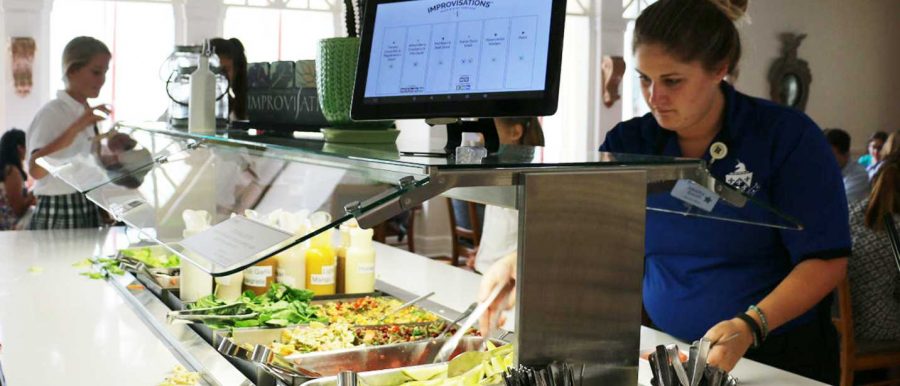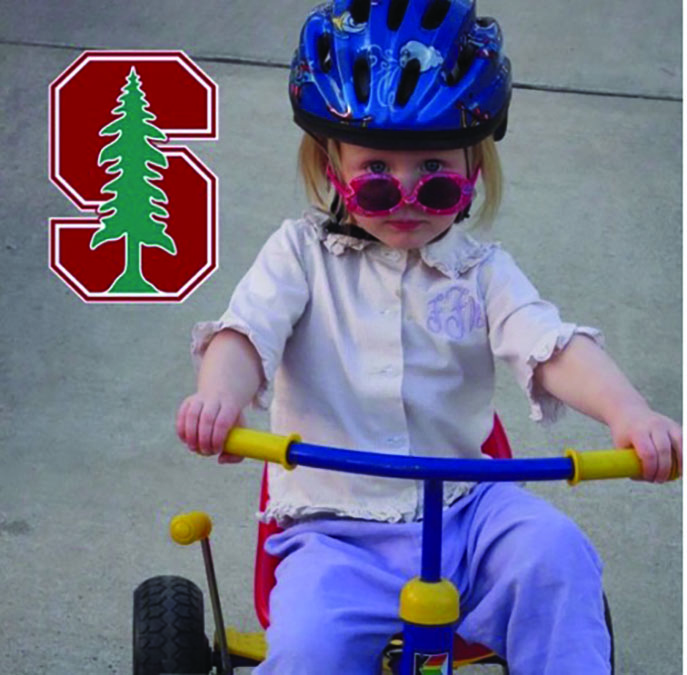Stepping into the new lunch line, you see succulents hanging on the walls and the daily offerings written on a chalkboard. The options are endless—there are several entrées and sides offered in the main line, a different option like a pesto or salsa bar and salad and sandwich bar equipped with a panini press and spa water infused with different fruits. With these many options, it is no surprise that 90 percent of 250 students surveyed prefer SAGE to the old lunch service.
Many students also think SAGE is healthy. “There are so many great options and choices and I love how many more healthy options we have now,” sophomore Sara Grace Aldis said.
However; without a readily available list of nutritional information, how can you be sure that SAGE is “healthy”?
The ingredients used in SAGE meals are whole foods you have probably heard of. You can find all the ingredients in each dish on the online menu. In fact, SAGE prides itself in using fresh, local produce.
Jaime Orman, SAGE’s Food Service Director at Hockaday, said that because of Hockaday’s location in Texas, it can be difficult to get local produce, but many of the fruits and vegetables are from local farmers and the baked goods are from a bakery in Denton. Orman also said that they try to get as many organic and fresh ingredients as possible, and they are working on a garden at Hockaday to get even more fresh, local produce.
To find the specific nutritional information, like calories, you need an access code. This may appear suspicious, but the SAGE website cleared this up, stating that they did not post the calories because complaints at previous schools showed that it exacerbates eating disorders.
SAGE recommends you use the spotlight service when putting together your plate. Each food is labeled with a colored dot, and the spotlight service tells how much of each colored dot you should put on your plate. How healthy your meals are depends on how well you follow the spotlight service.
After putting together meals with recommended amounts of each food from the SAGE spotlight service, it was revealed that in most aspects of SAGE are healthy. The recommended amounts of calories, proteins, and sugars for teens align with those in SAGE meals. So, as long as you take into account the colored dots next to the food fill your plate using these, your calorie, protein, and sugar intake should be healthy.
But sometimes sodium levels in SAGE meals appeared to be slightly higher than the recommended amount for teenage girls which is 2,300 mg per day. Each of the three meals a day should have approximately 765 mg of sodium. A sample meal with sides of rice and zucchini, a taco, soup and a roll has 925 mg of sodium.
Orman said that the portion sizes of the food are determined by the dietary needs of the age group who is eating the food, so even if you do not follow the spotlight service, if you fill your plate, you should still be getting enough food.
Another part of a lunch service being healthy is that it caters to students with allergies and dietary restrictions. The SAGE website claims that “SAGE provides national expertise on allergy accommodations and ADA compliance. All SAGE Team Members are extensively trained in food allergy awareness” and “we have crafted our programs to accommodate most individuals safely and sustainably.”
On the online menu, the most common allergens in the foods are posted daily. There are sometimes substitutions for foods containing allergens like gluten. Junior Samantha Watson, allergic to gluten, dairy, eggs and soy, said that eating in the cafeteria with her allergies is much easier with SAGE. Watson said that there are plenty of options for her, especially in the salad area. Her only complaint is that the allergens in the food is not listed clearly in the actual dining hall, only online.
As long as you are mindful of how much food you are eating and utilize the spotlight service, you can be confident that your lunch from the cafeteria is healthy, and you can feel good after enjoying the new cafeteria food.














